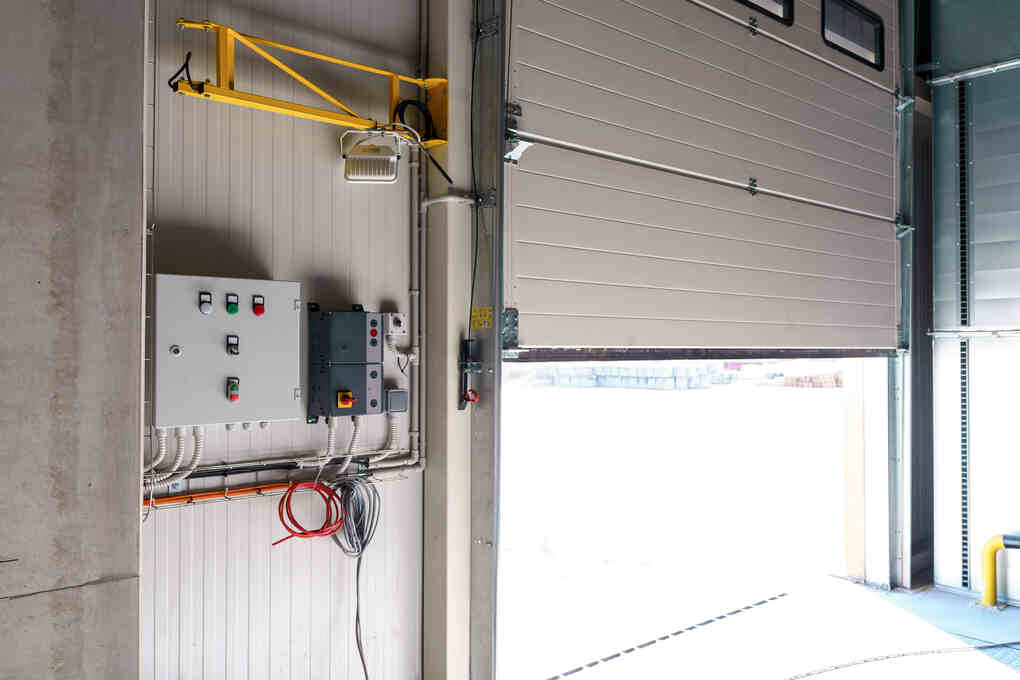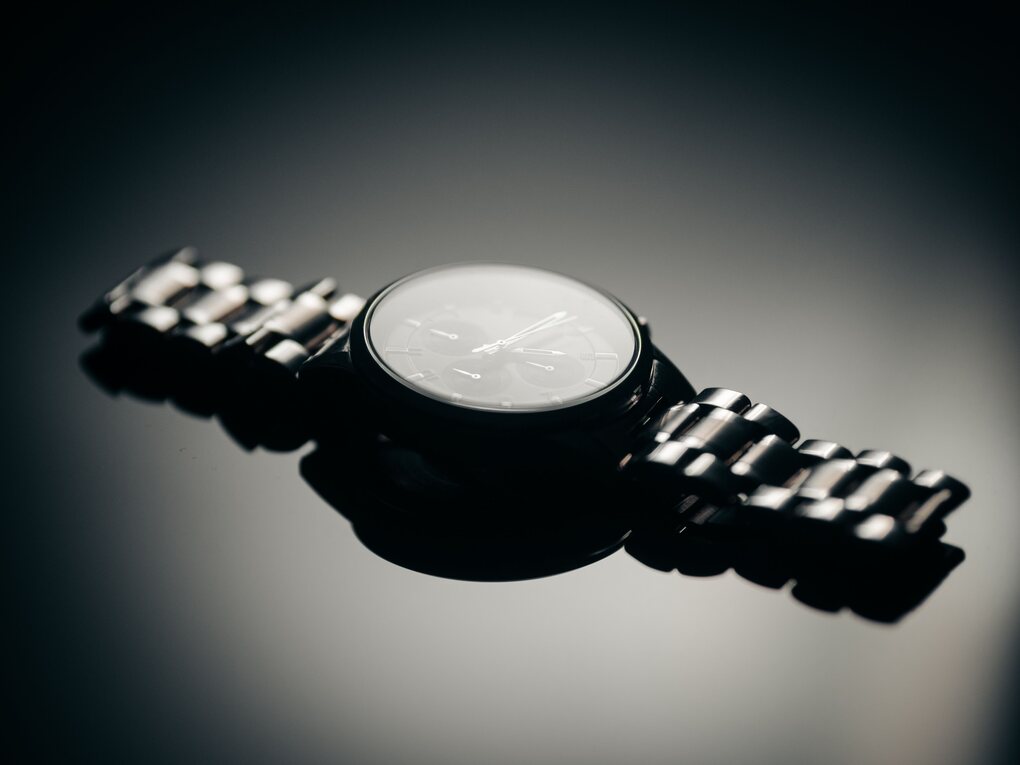

Life Hack
How to Open a Garage Door Manually After a Power Outage: A Detective’s Guide
![]()
In the shadowy corners of our daily lives, there are few things as frustrating as a power outage at the worst possible moment. The lights go out, your appliances shut down, and, just when you’re about to leave the house, you realize your garage door is stuck. But fear not, for this is a case solvable with a bit of detective work and a step-by-step approach. Let’s unravel the mystery of how to open a garage door manually after a power outage.
Understanding the Garage Door Mechanism
Before diving into the solution, it’s important to understand the scene of the mystery—the garage door mechanism itself. Most modern garage doors are powered by an electric motor that automatically lifts and lowers the door with the press of a button. This convenience, however, becomes a challenge when the power goes out.
At the heart of this mechanism is the garage door opener, typically installed on the ceiling of the garage. The opener is connected to the door via a trolley, which moves along a track, raising and lowering the door. When the power is on, the motor drives the trolley, and the door moves effortlessly.
But here’s the key to the case: even without power, the garage door can still be opened manually. How? By disengaging the trolley from the opener and allowing the door to move freely on its track.
The Red Cord – A Clue to the Manual Operation
In every mystery, there’s a crucial clue that leads to the solution. In this case, it’s the red emergency release cord—a simple but vital tool in your quest to open the garage door manually. This cord hangs down from the trolley and is easily identifiable by its bright red color.
The emergency release cord is designed specifically for situations like power outages. When pulled, it disconnects the trolley from the garage door opener, allowing you to move the door manually. But before you yank on that cord, there are a few steps to ensure you do it correctly.
Step 1: Ensure the Garage Door is Fully Closed First, make sure the garage door is fully closed before pulling the emergency release cord. If the door is partially open, it may slam shut unexpectedly when the cord is pulled, which could cause damage or injury. If the door is open and you need to close it, proceed with caution, keeping your hands and fingers clear of any moving parts.
Step 2: Locate the Emergency Release Cord Next, locate the red emergency release cord. It usually hangs down from the center of the garage door opener’s trolley. The cord is designed to be easily accessible, even in the dark, so you should be able to find it without much trouble.
Step 3: Pull the Cord to Disengage the Trolley Once you’ve located the cord, give it a firm pull. This action disengages the trolley from the opener, freeing the garage door from the automatic system. You’ll likely hear a click or feel the tension release as the trolley disconnects.
Now, the door is no longer connected to the opener, and you’re ready to proceed to the next step—opening the garage door manually.
Manually Opening the Garage Door
With the trolley disengaged, the garage door is now free to move along its tracks. But this isn’t a job for the faint-hearted. Depending on the size and material of the door, it could be quite heavy. Here’s how to do it safely:
Step 4: Lift the Garage Door Stand with your feet shoulder-width apart and position yourself under the center of the garage door. Use both hands to grasp the door from the bottom. Lift the door slowly and steadily, applying even pressure as you raise it. The door should move smoothly along the tracks, but if you encounter resistance, stop and check for any obstructions.
Most garage doors are equipped with torsion or extension springs that help balance the weight, making it easier to lift. However, if your door is exceptionally heavy or difficult to move, do not force it. Forcing the door can cause damage or lead to injury. Instead, seek assistance from a professional.
Step 5: Secure the Door in the Open Position Once you’ve lifted the door to the desired height, make sure it stays in place. Some garage doors have built-in locks or manual latches that can hold the door open. If your door has one, engage the lock to prevent the door from accidentally closing. If not, you can use a sturdy object, such as a piece of wood or a clamp, to prop the door open temporarily.
Reconnecting the Garage Door Opener
The case isn’t fully closed until the power is restored and your garage door is back in working order. Here’s how to reconnect the door to the automatic opener once the electricity is back on.
Step 6: Close the Garage Door Manually Before reconnecting the opener, close the garage door manually. This ensures that the door is properly aligned on its tracks and ready for re-engagement. If you used a lock or prop to keep the door open, remove it and gently lower the door.
Step 7: Re-Engage the Trolley To reconnect the trolley, simply pull the red emergency release cord towards the door. This action resets the trolley to its original position. In some cases, you may need to manually slide the trolley along the track until it clicks back into place.
Once the trolley is re-engaged, the next time you use the garage door opener, the trolley will automatically reconnect to the opener’s carriage, restoring normal operation.
Step 8: Test the Garage Door Opener Finally, test the garage door opener to ensure everything is functioning correctly. Press the button on your remote or wall-mounted opener to activate the door. The door should move smoothly and without hesitation. If it doesn’t, check to make sure the trolley is fully engaged, or consult the manual for troubleshooting tips.
Preventive Measures and Final Thoughts
Now that you’ve cracked the case of how to manually open a garage door after a power outage, it’s time to consider some preventive measures to avoid being caught off guard in the future.
Install a Backup Power Source: One of the best ways to ensure you’re never stranded by a power outage is to install a backup battery for your garage door opener. Many modern openers come with this option, allowing the door to function even when the main power is out. A backup battery typically provides enough power for multiple cycles, giving you peace of mind during an outage.
Regular Maintenance: Keep your garage door and opener in good working condition with regular maintenance. Lubricate the tracks, check the balance of the door, and inspect the springs and cables for wear and tear. Regular maintenance not only extends the life of your garage door but also ensures it’s ready to operate manually if needed.
Practice the Manual Operation: Familiarize yourself with the process of manually opening your garage door before an emergency arises. Knowing exactly what to do and how to do it can save valuable time and reduce stress during a power outage. Practice the steps occasionally to ensure you’re comfortable with the procedure.
Conclusion
In the dim light of a power outage, the simple task of opening your garage door can feel like an insurmountable challenge. But with the right knowledge and a methodical approach, you’ve now solved the mystery of how to open a garage door manually.
Remember, the key to this case lies in the red emergency release cord, a vital clue that allows you to disengage the automatic opener and take control. By following these detective steps, you can safely and efficiently open your garage door, ensuring that even in the darkest of times, you won’t be trapped by the power of electricity—or the lack thereof.
With this investigation wrapped up, you can now face any power outage with confidence, knowing that you have the skills to crack the case of the stubborn garage door. Case closed.

Life Hack
Real Estate in the Blockchain Era: Tokenization of Properties

![]()
The world of real estate is undergoing a seismic shift, driven by the revolutionary technology of blockchain. For millennials worldwide, this transformation offers unprecedented opportunities to invest, trade, and own property in ways that were once unimaginable. At the heart of this evolution lies tokenization, a process that converts real estate assets into digital tokens on a blockchain. This innovation is not just reshaping how we buy and sell properties; it’s democratizing access to one of the most lucrative asset classes in the world. In this article, we’ll explore what tokenization means for real estate, its benefits, challenges, and why it’s a game-changer for the millennial generation.
What is Tokenization of Real Estate?
Tokenization involves breaking down the value of a physical asset—such as a residential property, commercial building, or even land—into smaller digital units called tokens. These tokens are stored and traded on a blockchain, which acts as a decentralized ledger ensuring transparency, security, and immutability. Each token represents fractional ownership of the underlying asset, allowing investors to buy, sell, or trade portions of the property without needing to purchase the entire asset.
For example, imagine a $1 million apartment being divided into 1,000 tokens, each worth $1,000. Investors can purchase as few as one token, gaining a proportional share of the property’s value and potential rental income. This fractional ownership model opens doors for individuals who previously couldn’t afford to enter the real estate market due to high entry costs.
Why Tokenization Matters for Millennials
Millennials face unique challenges when it comes to investing in real estate. Rising property prices, stringent mortgage requirements, and limited access to capital have made traditional homeownership increasingly out of reach. Tokenization addresses these barriers by offering a more accessible, flexible, and inclusive approach to property investment.
1. Lower Financial Barriers
Traditional real estate investments often require significant upfront capital, making them inaccessible to many young investors. With tokenization, you can start with as little as $100 or $500, depending on the platform and property. This democratizes access to real estate, enabling millennials to build wealth through diversified portfolios.
2. Global Investment Opportunities
Blockchain-based platforms allow investors to participate in real estate markets anywhere in the world. Whether it’s a luxury condo in Dubai, an office building in New York, or farmland in Brazil, tokenization removes geographical constraints. This global reach empowers millennials to diversify their investments across borders and asset types.
3. Liquidity in an Illiquid Market
Real estate has traditionally been one of the least liquid asset classes. Selling a property can take months—or even years—depending on market conditions. Tokenization introduces liquidity by enabling fractional shares to be traded on secondary markets 24/7. Investors can buy and sell tokens quickly, much like stocks or cryptocurrencies, without waiting for a full property sale.
4. Transparency and Security
Blockchain’s decentralized nature ensures that all transactions are recorded transparently and cannot be altered. Smart contracts—self-executing agreements coded on the blockchain—automate processes such as dividend distribution, rental payouts, and ownership transfers. This eliminates intermediaries like brokers, lawyers, and banks, reducing costs and increasing trust.
5. Diversification Made Easy
Instead of tying up your savings in a single property, tokenization allows you to spread your investments across multiple assets. For instance, you could own fractions of a residential complex in London, a shopping mall in Tokyo, and agricultural land in Argentina—all within the same portfolio. This diversification minimizes risk while maximizing returns.
How Does Tokenization Work?
The process of tokenizing real estate typically follows these steps:
Step 1: Asset Selection
The property owner selects the asset they wish to tokenize. This could range from residential homes and commercial buildings to industrial facilities or undeveloped land.
Step 2: Legal Structuring
A legal framework is established to ensure compliance with local regulations. The property is placed in a special-purpose vehicle (SPV), such as a holding company, whose shares are then represented by tokens.
Step 3: Valuation and Division
The property undergoes professional valuation to determine its total worth. It is then divided into smaller units, each represented by a token. For example, a $2 million property might be split into 2,000 tokens at $1,000 each.
Step 4: Issuance on Blockchain
The tokens are issued on a blockchain platform, where they become tradable assets. Investors can purchase these tokens through cryptocurrency exchanges or specialized real estate platforms.
Step 5: Ongoing Management
Smart contracts handle day-to-day operations, including rent collection, profit distribution, and maintenance fees. Investors receive their share of rental income or capital appreciation automatically based on their token holdings.
Benefits of Tokenized Real Estate
1. Accessibility
Tokenization lowers the barrier to entry, enabling anyone with internet access to invest in real estate. This inclusivity aligns perfectly with the values of the millennial generation, which prioritizes equality and opportunity.
2. Cost Efficiency
By eliminating middlemen, tokenization reduces transaction costs significantly. Traditional real estate deals involve hefty fees for agents, lawyers, and escrow services, whereas blockchain-based systems streamline these processes.
3. Enhanced Liquidity
As mentioned earlier, tokenized real estate provides unparalleled liquidity compared to traditional property sales. Secondary markets operate continuously, giving investors the flexibility to exit positions whenever needed.
4. Fractional Ownership
Fractional ownership allows investors to diversify their portfolios without committing large sums of money. This is particularly appealing to millennials who prefer spreading risks across multiple ventures.
5. Transparency and Trust
Every transaction on the blockchain is immutable and visible to all participants. This level of transparency builds confidence among buyers, sellers, and regulators alike.
Challenges Facing Tokenized Real Estate
While tokenization holds immense promise, it’s not without challenges. Here are some hurdles that need to be addressed:
1. Regulatory Uncertainty
Real estate laws vary widely across countries, and many jurisdictions have yet to establish clear guidelines for tokenized assets. Navigating this regulatory maze can be daunting for both issuers and investors.
2. Market Adoption
Despite growing interest, tokenized real estate remains a niche market. Widespread adoption will depend on educating consumers, improving user-friendly platforms, and fostering trust in blockchain technology.
3. Volatility Concerns
Although blockchain enhances liquidity, it also exposes investors to price volatility. Fluctuations in token values may deter risk-averse individuals from participating.
4. Cybersecurity Risks
Like any digital system, blockchain platforms are vulnerable to hacking and fraud. Robust security measures are essential to protect investor funds and maintain credibility.
5. Lack of Standardization
Currently, there’s no universal standard for tokenizing real estate. Differences in platforms, protocols, and practices create fragmentation, complicating cross-border transactions.
Why Millennials Should Embrace Tokenization
For millennials, tokenization isn’t just about investing—it’s about embracing a new paradigm of ownership. Here’s why this generation should lead the charge:
1. Alignment with Tech-Savvy Values
As digital natives, millennials are comfortable adopting cutting-edge technologies. Tokenization leverages blockchain—a technology synonymous with innovation—to modernize an age-old industry.
2. Focus on Sustainability
Many tokenized projects prioritize eco-friendly developments, such as green buildings or renewable energy farms. This resonates with millennials’ commitment to environmental responsibility.
3. Flexibility for Digital Nomads
With remote work becoming the norm, millennials no longer need to tie themselves to specific locations. Tokenization lets them invest in global properties without relocating physically.
4. Long-Term Wealth Creation
Real estate has historically been a stable store of value. By combining this reliability with blockchain’s efficiency, tokenization offers millennials a pathway to generational wealth.
Conclusion: The Future of Real Estate is Here
Tokenization represents the next frontier in real estate, blending centuries-old traditions with futuristic technology. For millennials, it’s an invitation to rethink how we view property ownership—not as a static asset but as a dynamic, interconnected ecosystem. By embracing tokenization, you’re not only investing in real estate; you’re investing in a vision of inclusivity, innovation, and sustainability.
The question isn’t whether tokenization will transform real estate—it’s already happening. The real question is: Will you be part of this revolution? Take the leap today, explore tokenized real estate platforms, and position yourself at the forefront of a movement that’s redefining wealth creation for generations to come.
Your future self—and your wallet—will thank you.
Life Hack
Cryptocurrency as an Investment Asset: Opportunities and Risks

![]()
In recent years, cryptocurrency has emerged as a revolutionary asset class, capturing the attention of investors worldwide. For beginners stepping into the world of finance, understanding cryptocurrency as an investment vehicle is crucial. While it offers exciting opportunities for wealth creation, it also comes with significant risks that must be carefully considered. This article explores the potential benefits and challenges of investing in cryptocurrency, providing a balanced perspective to help novice investors make informed decisions.
What is Cryptocurrency?
Cryptocurrency is a digital or virtual form of currency that uses cryptography for security. Unlike traditional currencies issued by governments (fiat money), cryptocurrencies operate on decentralized networks based on blockchain technology. The most well-known cryptocurrency is Bitcoin, but there are thousands of others, such as Ethereum, Cardano, Solana, and Ripple. These digital assets are stored in digital wallets and can be bought, sold, or traded on various online platforms called exchanges.
For many investors, cryptocurrency represents more than just a new type of money—it’s a technological innovation with the potential to disrupt industries ranging from finance to supply chain management. However, its volatile nature and speculative appeal make it both an exciting and risky investment.
Why Invest in Cryptocurrency?
1. High Growth Potential
One of the primary reasons investors are drawn to cryptocurrency is its potential for high returns. Since Bitcoin’s inception in 2009, early adopters have seen astronomical gains. For instance, Bitcoin’s price surged from less than $1 in 2011 to over $60,000 at its peak in 2021. Similarly, Ethereum and other altcoins have delivered impressive returns during bull markets. For investors seeking rapid growth, cryptocurrency offers unparalleled opportunities compared to traditional assets like stocks or bonds.
2. Decentralization and Independence
Cryptocurrencies operate on decentralized networks, meaning they are not controlled by any central authority, such as a government or bank. This decentralization appeals to investors who value financial independence and transparency. With cryptocurrencies, you have full control over your assets, eliminating the need for intermediaries like banks or brokers.
3. Diversification
Including cryptocurrency in an investment portfolio can provide diversification benefits. Cryptocurrencies often exhibit low correlation with traditional asset classes like stocks and bonds, meaning their performance may not always align with broader market trends. By adding crypto to your portfolio, you can potentially reduce overall risk through diversification.
4. Accessibility
Unlike traditional investments that require significant capital or complex processes, cryptocurrency is highly accessible. Anyone with an internet connection can buy and trade cryptocurrencies, even with small amounts of money. Platforms like Coinbase, Binance, and Kraken make it easy for beginners to get started.
5. Innovation and Utility
Many cryptocurrencies are more than just speculative assets—they power innovative technologies and ecosystems. For example:
- Ethereum enables smart contracts and decentralized applications (dApps).
- Cardano focuses on scalability and sustainability.
- Chainlink provides oracle services connecting blockchains to real-world data.
Investing in these projects allows you to support cutting-edge advancements while potentially benefiting from their adoption.
The Risks of Investing in Cryptocurrency
While the opportunities are enticing, cryptocurrency comes with substantial risks that every investor should understand before diving in.
1. Extreme Volatility
Cryptocurrency prices are notoriously volatile. Prices can skyrocket one day and plummet the next, driven by factors like market sentiment, regulatory news, or macroeconomic conditions. For example, Bitcoin dropped nearly 50% in value within months after reaching its all-time high in late 2021. Such volatility makes it difficult to predict future performance and increases the risk of significant losses.
2. Lack of Regulation
Unlike traditional financial markets, the cryptocurrency space is largely unregulated. This lack of oversight creates opportunities for fraud, manipulation, and unethical practices. Scams like rug pulls, Ponzi schemes, and fake initial coin offerings (ICOs) are common in the crypto world. Additionally, regulatory crackdowns in certain countries could negatively impact the market.
3. Security Concerns
Hacking and theft remain major issues in the cryptocurrency industry. Exchanges and wallets are frequent targets for cybercriminals. If your account is compromised or you lose access to your private keys, recovering your funds is nearly impossible. Therefore, proper security measures—such as using hardware wallets and enabling two-factor authentication—are essential.
4. Limited Adoption
Despite growing interest, cryptocurrencies still face challenges in achieving widespread adoption. Many businesses do not accept cryptocurrencies as payment, and their use cases remain limited compared to traditional currencies. Until mainstream adoption improves, the long-term viability of some cryptocurrencies remains uncertain.
5. Environmental Impact
Some cryptocurrencies, particularly those using Proof of Work (PoW) consensus mechanisms like Bitcoin, consume vast amounts of energy. Critics argue that this environmental impact undermines the sustainability of PoW-based cryptocurrencies. While alternatives like Proof of Stake (PoS) are gaining traction, concerns about energy consumption persist.
6. Emotional Decision-Making
The fast-paced nature of cryptocurrency trading can lead to impulsive decisions driven by fear or greed. Novice investors may fall victim to FOMO (Fear of Missing Out) during bull runs or panic-sell during downturns, resulting in poor investment outcomes.
How to Invest in Cryptocurrency Safely
To mitigate risks and maximize opportunities, follow these best practices:
1. Educate Yourself
Before investing, take time to learn about blockchain technology, how cryptocurrencies work, and the differences between various coins. Resources like CoinDesk, Cointelegraph, and educational YouTube channels can help deepen your understanding.
2. Start Small
Begin with a small amount of money that you can afford to lose. Cryptocurrency is highly speculative, and there’s no guarantee of profits. Treat it as a high-risk, high-reward component of your overall investment strategy.
3. Diversify Your Portfolio
Avoid putting all your money into a single cryptocurrency. Spread your investments across different assets, such as Bitcoin, Ethereum, and promising altcoins, to reduce risk.
4. Use Reputable Platforms
Stick to well-established exchanges with strong security measures, such as Coinbase, Binance, or Kraken. Avoid obscure platforms that lack transparency or verifiable track records.
5. Secure Your Assets
Store your cryptocurrencies in secure wallets rather than leaving them on exchanges. Hardware wallets like Ledger or Trezor offer offline storage, protecting your funds from hackers.
6. Stay Updated
Follow reputable sources for the latest news and developments in the cryptocurrency space. Regulatory changes, technological upgrades, and market trends can significantly impact prices.
7. Be Patient
Cryptocurrency markets are cyclical, experiencing periods of rapid growth (bull runs) followed by sharp declines (bear markets). Instead of trying to time the market, focus on long-term goals and avoid emotional decision-making.
Is Cryptocurrency Right for You?
Deciding whether to invest in cryptocurrency depends on your financial goals, risk tolerance, and investment horizon. If you’re comfortable with high-risk, speculative investments and believe in the long-term potential of blockchain technology, cryptocurrency might be worth exploring. However, if you prefer stability and predictable returns, traditional assets like stocks, bonds, or real estate may be better suited to your needs.
For beginner investors, it’s important to approach cryptocurrency with caution. View it as a supplementary part of your portfolio rather than the sole focus. Always prioritize thorough research and sound judgment over hype or speculation.
Conclusion: Balancing Opportunity and Risk
Cryptocurrency represents a unique blend of opportunity and risk, making it a polarizing yet fascinating asset class. On one hand, it offers the potential for extraordinary returns, technological innovation, and financial freedom. On the other hand, its volatility, regulatory uncertainty, and security vulnerabilities pose significant challenges.
By educating yourself, starting small, diversifying your investments, and prioritizing security, you can navigate the complexities of cryptocurrency investing with confidence. Remember, the key to success lies in balancing ambition with prudence—approaching this dynamic market with both curiosity and caution.
As the saying goes, “High risk, high reward.” Whether you choose to embrace cryptocurrency or explore other avenues, always invest wisely and stay true to your financial objectives.
Life Hack
The Top 10 Must-Have Luxury Items: An Investigator’s Quest

![]()
The Curious Case of Modern Luxury
Luxury. A word that rolls off the tongue with a mix of intrigue and allure. As a detective on a quest for truth and indulgence, I’ve been summoned to uncover the mysteries surrounding the world’s most coveted luxury items. My task? To assemble a definitive list of the top 10 must-have luxury items. The clock ticks as we delve into the clues and trace the opulent trails left behind by the elite. But be warned, dear reader, the world of luxury is one of desire, indulgence, and… exclusivity.
The Sleek Swiss Timekeeper
First on my list is the pièce de résistance of luxury—the Swiss watch. Now, this isn’t just any timepiece. No, we’re talking about brands like Rolex, Patek Philippe, and Audemars Piguet. Imagine this: hand-crafted movements ticking with precision so flawless, it can only be rivaled by the precision of a master detective. The wristwatch, darling of both CEOs and celebrities, isn’t merely for telling time; it’s a status symbol, a statement that says, “I’ve arrived.” A glint of gold on the wrist can speak louder than words ever will.
The Posh Leather Arm Candy
The plot thickens as we enter the realm of luxury handbags. Ah yes, the holy grail of arm candy. From Hermès’ Birkin to Chanel’s iconic 2.55, these bags are more than just fashion accessories; they are investments. Each stitch, each buckle tells a story of craftsmanship and exclusivity. Detecting a genuine Hermès from a fake? Child’s play to a seasoned investigator like myself. But to the untrained eye, it’s like spotting a needle in a haystack. The Birkin, in particular, is worth its weight in gold—literally.
The Purring Beast
Now, we can’t discuss must-have luxury items without cruising through the sleek world of luxury cars. Lamborghini, Bentley, Rolls-Royce… These aren’t mere vehicles; they are roaring symbols of power and prestige. You see, dear reader, owning a luxury car is akin to commanding an exotic beast. The throaty growl of the engine, the impeccable interiors, the envious glances as you glide down the boulevard—luxury cars are the ultimate indulgence for those who thrive on speed, power, and attention.
The Jewel in the Crown
Luxury sparkles in the form of fine jewelry. Diamonds, sapphires, and rubies—the very definition of allure. Brands like Cartier and Tiffany & Co. have mastered the art of creating pieces that not only captivate but also elevate. A well-placed ring or necklace can shift the entire dynamic of an outfit, much like an astute deduction can crack open a seemingly unsolvable case. It’s no coincidence that such treasures are often hidden in velvet-lined cases, much like the secrets of the wealthy are kept behind gilded walls.
The Tailor-Made Tux
Luxury in clothing is a delicate matter, but nothing spells sophistication like a bespoke suit. Crafted by tailors who understand every contour of the body, a bespoke suit is the pinnacle of personal luxury. Savile Row in London is home to the finest bespoke tailors, their names whispered only among those who know quality when they see it. Much like myself, a finely crafted suit reveals hidden details upon closer inspection. The crisp lines, the perfect fit—it’s an art form, one that speaks volumes before a word is uttered.
The Exclusive Perfume
In the course of my investigations, I have often noticed that a scent lingers long after the person has vanished. And that brings us to luxury perfumes. Fragrances from brands like Tom Ford and Maison Francis Kurkdjian are not just scents—they are olfactory experiences. These perfumes are crafted with rare ingredients, designed to evoke emotions and memories. A whiff of oud or jasmine can transport you to a different time and place, much like a well-constructed alibi. A luxury perfume is the invisible accessory that completes an aura of sophistication.
The Sanctuary of Comfort
No investigation would be complete without visiting the sanctum of rest and relaxation. I am, of course, talking about luxury bedding. Egyptian cotton sheets with a thread count so high, you might suspect witchcraft. Brands like Frette and D. Porthault make bedding that turns sleep into a royal experience. The crisp, cool touch of the finest linens is akin to unraveling the perfect mystery—there’s a thrill to it that words can scarcely capture.
The Tech Titan
Even in the world of luxury, technology holds its place. High-end smartphones and gadgets are as coveted as any diamond-encrusted bracelet. Take, for instance, the iPhone’s top-of-the-line models, which aren’t merely devices for communication. With their sleek designs, top-tier cameras, and enviable exclusivity, they’re symbols of being ahead of the curve. Then there’s the ultra-rare Vertu phones, handmade from titanium and leather, each device as personalized as a handwritten letter. In a world where everyone has a phone, these are devices for the discerning few who demand the best.
The Fine Art of Investment
Finally, our journey takes us into the quiet halls of fine art. Owning a masterpiece by Picasso, Van Gogh, or Banksy is a mark of prestige that transcends the material. Fine art is both an investment and a legacy. It hangs on the wall as a symbol of culture, intellect, and, quite frankly, having more money than one knows what to do with. It’s said that a picture is worth a thousand words, but in the case of luxury art, it might also be worth a few million.
Conclusion: The Detective’s Deduction
And there you have it, dear reader, the top 10 must-have luxury items that have captured the world’s imagination and wallets. These are the artifacts that define status and wealth in our modern age, just as surely as a well-placed clue leads to the capture of a criminal mastermind.
Luxury is, at its core, about more than just possession—it’s about a lifestyle. It’s a declaration to the world that you demand the very best. Whether it’s the tick of a Swiss watch or the roar of a luxury car, each of these items represents the pinnacle of human craftsmanship and desire.
In the end, my investigation reveals what I suspected all along: luxury isn’t just about having things; it’s about having the best of everything. And for those who seek it, luxury is the ultimate mystery—one that can never be fully solved but will always be pursued.
And with that, I tip my hat and leave you to contemplate your own luxury wishlist, for the chase is eternal and the clues are ever-present.
-

 Top 1011 months ago
Top 1011 months agoUnmasking the Cruelty: Top 10 Ways to Prevent Animal Cruelty
-

 Ask Why11 months ago
Ask Why11 months agoWhy Is the Check Engine Light On? A Detective’s Guide to Unraveling the Mystery
-

 How-Tos11 months ago
How-Tos11 months agoUnmasking the Mystery of Keeping Squirrels Away
-

 Top 1011 months ago
Top 1011 months agoUnmasking the Threats: The Top 10 Ways to Protect Endangered Species
-

 Forex7 months ago
Forex7 months agoWhat Are Swing Highs and Swing Lows in Market Structure? A Comprehensive Guide for TradingView Users
-

 Head To Head11 months ago
Head To Head11 months ago10 Reasons Why Dogs Are Better Than Cats: A Detective’s Investigation
-

 Deep Science11 months ago
Deep Science11 months agoThe 10 Craziest Scientific Discoveries You Missed in 2024
-

 Deep Science11 months ago
Deep Science11 months agoCatch the Perseid Meteor Shower: Peak Viewing Tips!